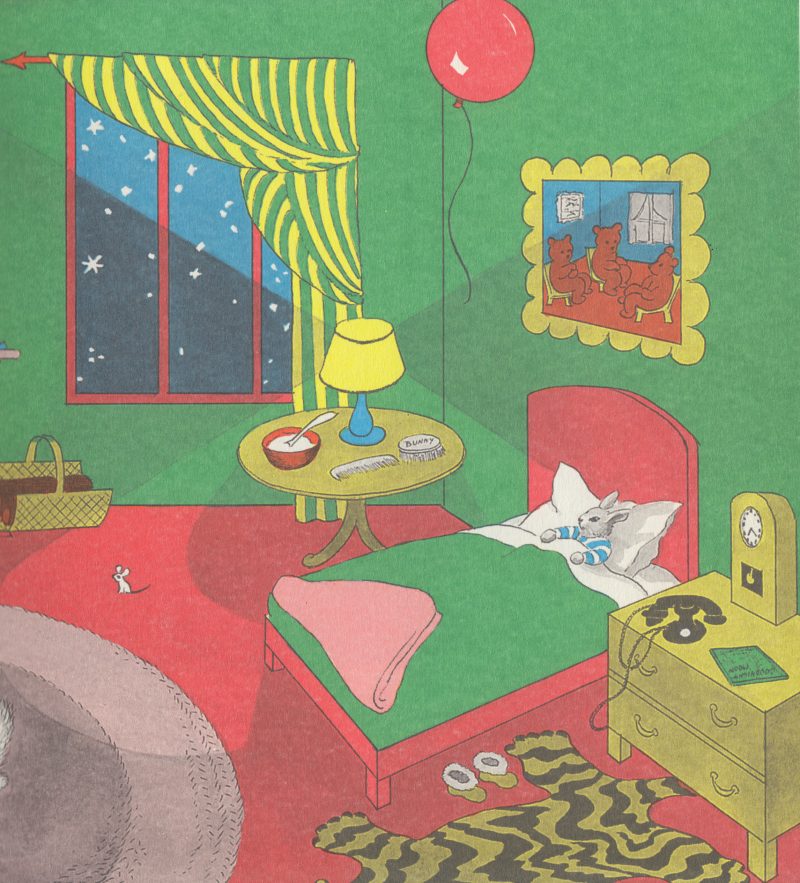Something unsettling resides at the heart of the most beloved books for very young children—that is, the literature for illiterates. This note is a belated attempt to grapple with the horror of infinite regression as it manifests in certain of these works, and perhaps to sound the alarm for parent-caretaker voice-over providers who are too sleep-deprived to notice what’s actually going on.
In Margaret Wise Brown’s Little Fur Family (1946, illustrated by Garth Williams), a small, hirsute child of indeterminate species spends a day in the woods. This gentle narrative of forest exploration appears completely anodyne. But at one point, the Little Fur Child meets another hairy biped, a fraction of his size. If we were to follow this second child (call it the Littler Fur Child), would he come across a third one, even smaller? There would be a fourth, a fifth… Maybe that speck on the edge of your page is not a bit of grime but the furry creature’s 17th or 717th iteration. Illustration has no limit. You could show a picture of the inside of an atom if you wanted. Maybe the 10756th LFC is dancing, invisible, on the tip of your knuckle as you read this sentence.

At the midway point in Margaret Wise Brown’s even more beloved Goodnight Moon (1947)—that instant when the book becomes a sort of palindrome and bids good night to all the things in the room that have just been itemized—something curious happens. The pictures of the cow jumping over the moon (center) and the three bears sitting on chairs (right) remain hanging, but visible on the left-hand wall of the curiously structured (non-Euclidean?) room is a painting that has gone unremarked. (The illustrations are by Clement Hurd.) A rabbit in waders is fly-fishing with a carrot, its quarry apparently a smaller rabbit.
A charming tableau, but what is it doing here, unidentified, in this universe where everything is named and...
You have reached your article limit
Sign up for a digital subscription and continue reading all new issues, plus our entire archives, for just $1.50/month.
Already a subscriber? Sign in





